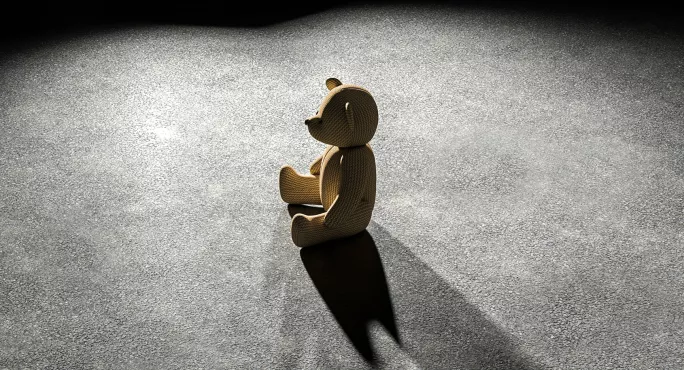Call for new law on restraint and seclusion in schools

A new report has revealed a lack of progress in the training and monitoring of staff in Scottish schools four years on from a landmark 2018 report on the use of restraint and seclusion.
In 2018 No Safe Place: Restraint and Seclusion in Scotland’s Schools, a report by the country’s children’s commissioner, shone a light on thousands of incidents affecting hundreds of children.
Today a report by Enable Scotland, entitled In Safe Hands Yet?, says that children are still not being given enough protection. Meanwhile, the charity - whose remit is to protect the rights of people with learning disabilities - has given its support to a campaigner who wants to see new legislation on restraint and seclusion.
- Related: Guidance on the use of restraint not enough, says children’s commissioner
- Long read: The “safe spaces” that are anything but
- In England: Many secondary restraint policies “risk human rights”
- Analysis: Paris Hilton, the unlikely anti-restraint campaigner
Enable Scotland defines restraint as “holding a child or young person to stop them from moving”, and seclusion as “shutting a child somewhere alone and not allowing them to leave - essentially deprivation of liberty and using physical force”.
Restraint and seclusion in schools ‘is traumatising’
The Enable Scotland report identifies a persistent lack of progress in training and the monitoring of school staff’s use of restraint and seclusion.
The charity calls for:
- Statutory guidance on the use of restraint and seclusion in schools - the report describes draft Scottish government guidance as “not fit for purpose”.
- Mandatory training - and a national training programme - for education staff working with children who have additional support for learning needs arising from learning disability, autism and neurodiversity, or who are looked after.
- The collection of data on the use of restraint and seclusion in local education authorities, in line with the Equality and Human Rights Commission recommendations.
- A national strategy to eliminate the use of restraint and seclusion in education settings.
Enable Scotland director Jan Savage said: “In simple terms, the rights of children and young people in Scotland are still not protected, and it’s unacceptable.
“Four years after the investigation by the children’s commissioner, we should not still be having to ask the question, ‘Are our children in safe hands yet?’”
Ms Savage added: “Draft guidance at this stage is just not good enough. Not whilst children are still being restrained.
“Action is needed to protect children’s rights in law, and to set out a clear strategy for systematically reducing restraint and seclusion in Scotland to a point where it is no longer a feature of our education system.”
Enable Scotland is supporting a mother who said her son was left traumatised after being physically restrained at a special school. She is campaigning for a new law in his name.
Calum Morrison, now 23, was 11 when he was forcefully restrained. His mother, Beth Morrison, has been campaigning for more than a decade. She says guidelines on the use of restraint and seclusion should become legally enforceable, and that there should be mandatory recording and reporting of all incidents.
She also wants compulsory training for all teachers and support staff on how to de-escalate situations so that physical restraint can be avoided as far as possible.
“The experience of this behaviour on young people is traumatising,” said Ms Morrison, who lives with her son in Monifieth, Angus.
“It affects their social skills, their enjoyment of school and - ironically - their subsequent behaviour at school.
“I think the people of Scotland will be shocked to learn that currently there is no law that protects their child from being physically and forcefully restrained in school or educational settings.”
Ms Morrison added: “We have been campaigning for change now for over a decade and it’s very clear to see that the current approach to non-statutory guidance doesn’t work.
“In this day and age, we should have a better understanding of how to work with young people - especially those with learning disabilities - without the use of forceful restraint.”
A petition launched by Ms Morrison in 2015, calling on the Scottish government to issue guidance on the use of restraint and seclusion in schools, was closed by the Scottish Parliament’s Education, Children and Young People Committee at a meeting today.
Ms Morrison’s petition garnered 4,670 signatures, and MSPs on the committee agreed to write to the Scottish government to request monitoring of how the draft guidance is implemented.
‘It must only ever be a last resort’
Education secretary Shirley-Anne Somerville said: “Restraint and seclusion in schools must only ever be used to prevent harm and as a last resort.
“The Scottish government is exploring options for strengthening the legal framework in this area.
“Human rights-based guidance was developed with input from young people, parents, carers, education staff and the children and young people’s commissioner Scotland, and has now been consulted on.”
The consultation closed on 25 October and Ms Somerville said the government would “carefully consider all feedback received”.
You need a Tes subscription to read this article
Subscribe now to read this article and get other subscriber-only content:
- Unlimited access to all Tes magazine content
- Exclusive subscriber-only stories
- Award-winning email newsletters
Already a subscriber? Log in
You need a subscription to read this article
Subscribe now to read this article and get other subscriber-only content, including:
- Unlimited access to all Tes magazine content
- Exclusive subscriber-only stories
- Award-winning email newsletters
topics in this article



